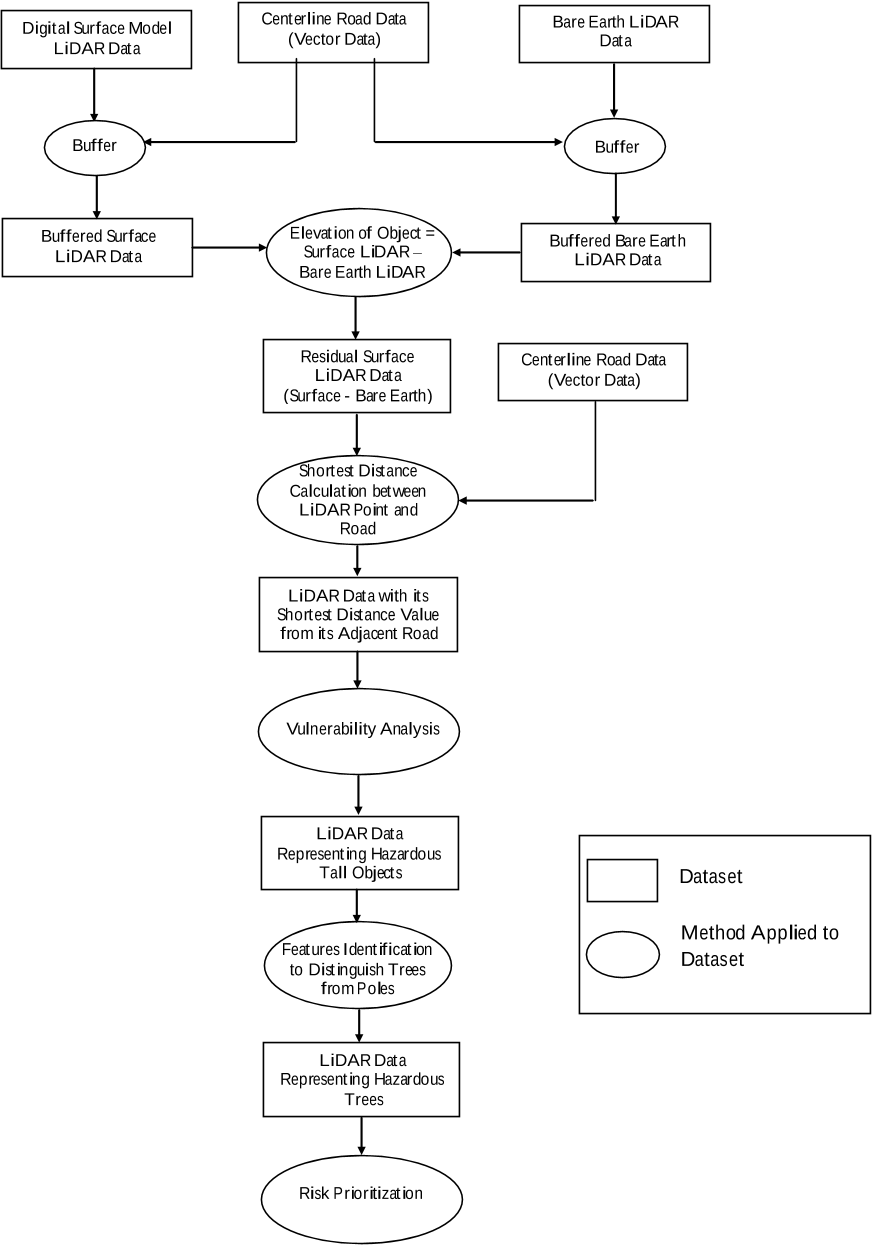




read more











other strong winds, and ice storms cause tremendous damage across the United States (US) including flooding, wind-based destruction of property, and blockage of major road networks from fallen objects.
GIS can be defined as a computer-based tool set for collecting, storing, retriev ing, transforming, and displaying spatial data from a discipline-specific domain for a particular set of purposes (Burrough and McDonnell 1998).
Airborne LiDAR systems are capable of producing extremely detailed informat ion of even small scanned areas (Baltsavias 1999), but to achieve a high level of detail requires substantial processing time.
According to the North Carolina Division of Emergency Management, after hurricane Isabel, Bert ie County alone required tree debris removal from all roads in the county except three, totaling 780 km of road from which 52,865 cubic meter or 43,245.27 kg of debris was removed, at a cost of $1.6 million, over the course of 84 days (Canty 2004).
The main objective of all of the aforementioned algorithms is to extract features, especially those related to geometry, from the LiDAR points.
An effective measure to counter such resource intensiveness, while not losing the desired level of detail, is to reduce the dataset size.
After the height calculation is completed, the shortest distances between the LiDAR points (within the buffer zone) and their adjoining road are calculated by subtracting half the road distance from the centerline position location(Table 2).
Because of budget restrictions, across the US there is no generalized, method to identify hazardous trees, despite the acknowledged expenses that they generate.
In this simple example, the number of data points was reduced by 83%, which decreased computation time by 67% compared to the time needed to process the non-buffered data.